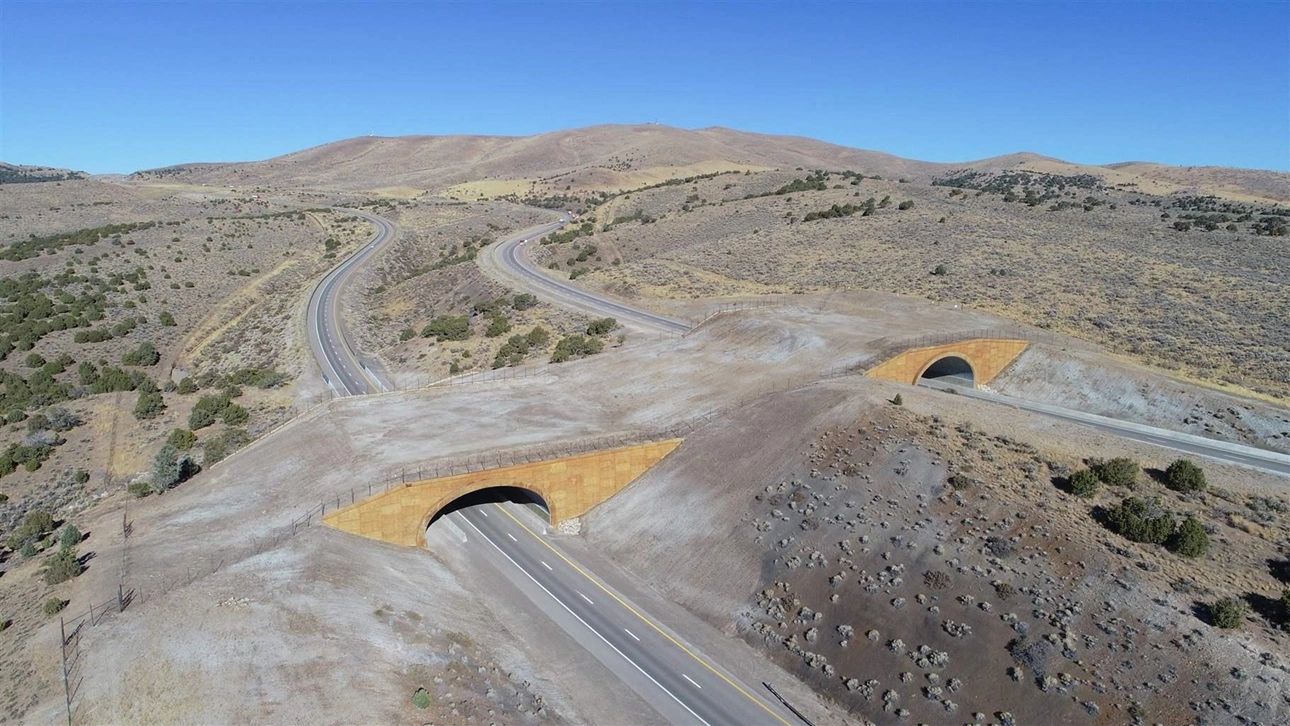
New poll shows that more than 90% favor more man-made crossings for animals
PewTrusts.org by Matt Skroch and Nic Callero February 27, 2020
In Nevada, as in much of the American West, roads and other development have cut through or encroached on migration routes that wildlife has used for centuries. That has led to an increase in costly—and often deadly—animal-vehicle collisions, and a recognition of the need for solutions, such as overpasses and underpasses for wildlife to use to cross roads.
Now, a poll finds that 93 percent of registered voters in Nevada, from across the political and socioeconomic spectrums, believe that it is important to adopt policies to protect wildlife migration routes in their state.
The survey, conducted by the research firm FM3 for The Pew Charitable Trusts and released Feb. 27, found that Nevadans overwhelmingly support solutions that safeguard migration routes for species such as mule deer, pronghorn antelope, and elk by protecting large blocks of habitat on public land and building wildlife overpasses and underpasses where collisions with vehicles commonly occur. This widespread support comes from both urban and rural areas.
Improved data from GPS-enabled wildlife collars is revolutionizing how Western states approach the issue of protecting migrating animals while reducing wildlife-vehicle collisions. A study of the first crossings built in Nevada in 2010 found that more than 37,000 animals used them in the first four years. The state now has 20 such crossings in place, with a major project involving two large wildlife overpasses over Interstate 80 at Pequop Pass completed in 2018. These relatively new conservation efforts enjoy prodigious support from Nevadans, and the poll results suggest that voters want agencies, from the Nevada Department of Wildlife and Department of Transportation to the federal Bureau of Land Management and U.S. Forest Service, to identify and conserve wildlife migration routes across the state.
For example, the poll found that 90 percent of Nevadans support special habitat designations to ensure that large blocks of existing high-quality habitat on public land are managed for the long-term protection of migration corridors. Ninety percent also support a proposal that federal land managers maintain open corridors so that wildlife can move unimpeded on public lands. And 92 percent of poll respondents support the construction of additional underpasses and overpasses for wildlife, while 84 percent see a need for increasing public funding for the construction of wildlife crossing structures on major highways that intersect with known migration routes.
According to a Nevada Department of Transportation study, more than 500 vehicle-animal collisions occur on the state’s roads each year, at a cost of over $19 million. Those expenses include accident victims’ medical bills, lost wages and household productivity, emergency response to crashes, and traffic congestion resulting from collisions. More than 5,000 wild animals are hit and killed by vehicles in the state annually.
Voters also say it is very important to prohibit certain development activities, such as oil and gas drilling, in the Ruby Mountains in northeastern Nevada to safeguard migrating mule deer herds. The Rubies are recognized around the world as a premier hunting, fishing, and outdoor recreation destination and support the largest herd of migrating mule deer in the state. When asked to prioritize between allowing oil and gas drilling in the Ruby Mountains and ensuring that wildlife have unimpeded migration routes throughout the range, 77 percent of voters say protecting migration routes is more important.
Nevada is home to robust populations of migrating wildlife, though, as in many places across the West, habitat loss and fragmentation threaten the long-term health and viability of those species. With new science and information about where and how animals move across landscapes combined with the overwhelming public support for a wide variety of conservation efforts, state and federal leaders are well positioned to enact policy and plan transportation infrastructure projects that protect wildlife habitat and people alike.
Matt Skroch is a manager and Nic Callero is a principal associate with The Pew Charitable Trusts’ U.S. public lands and rivers conservation team.

